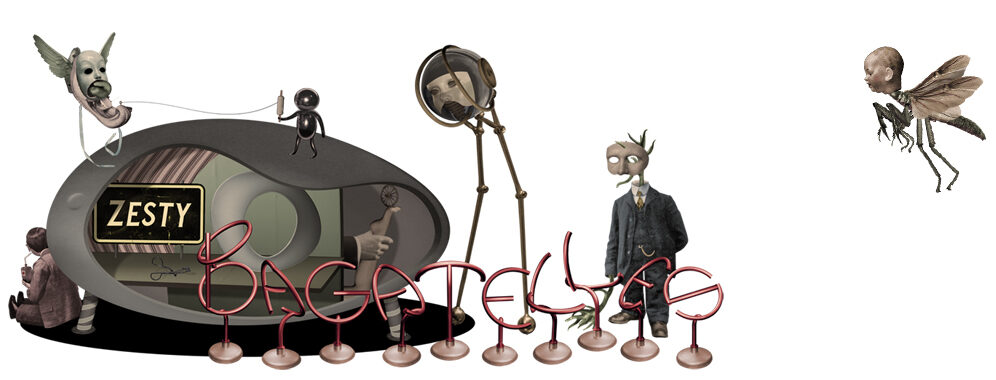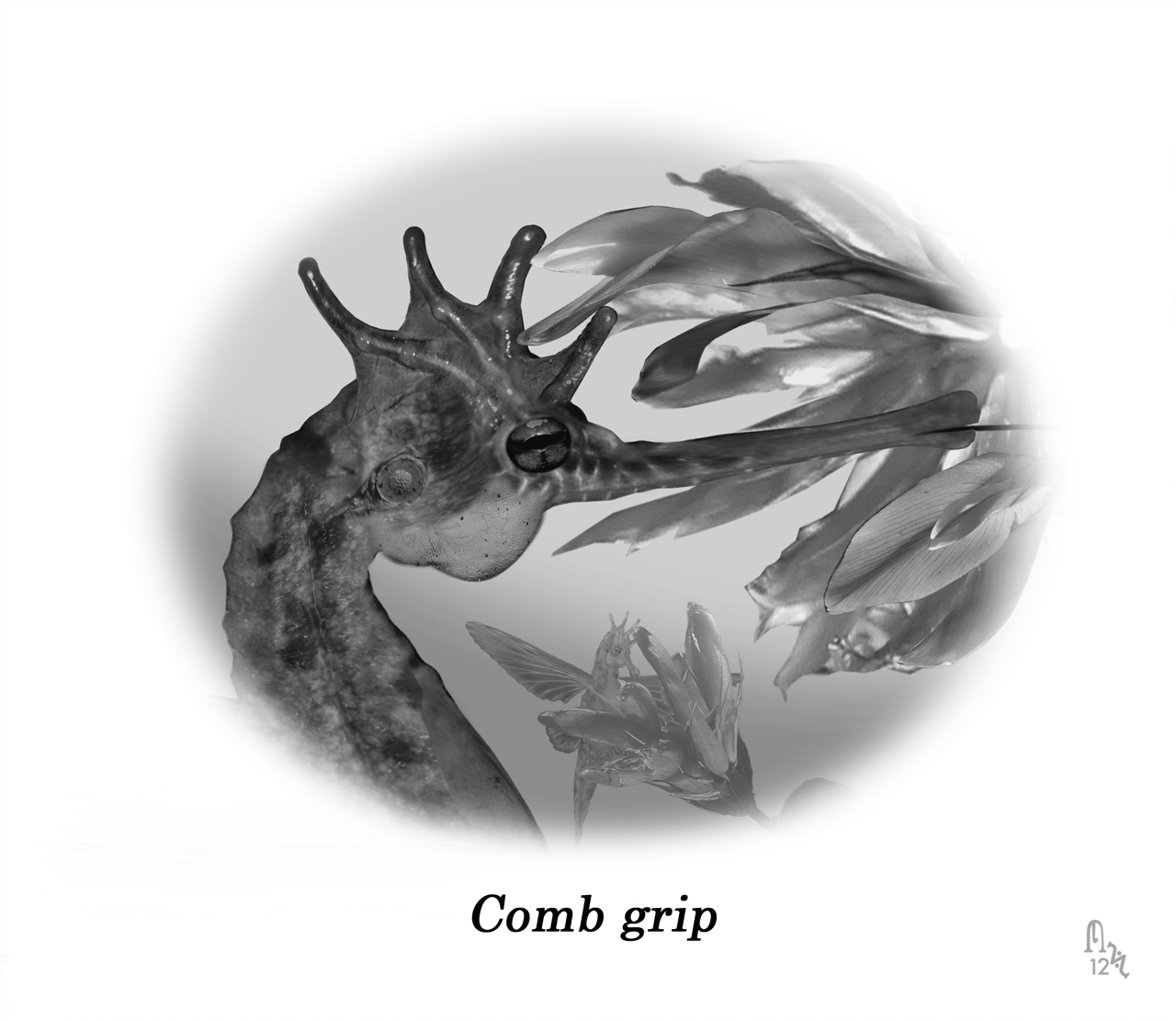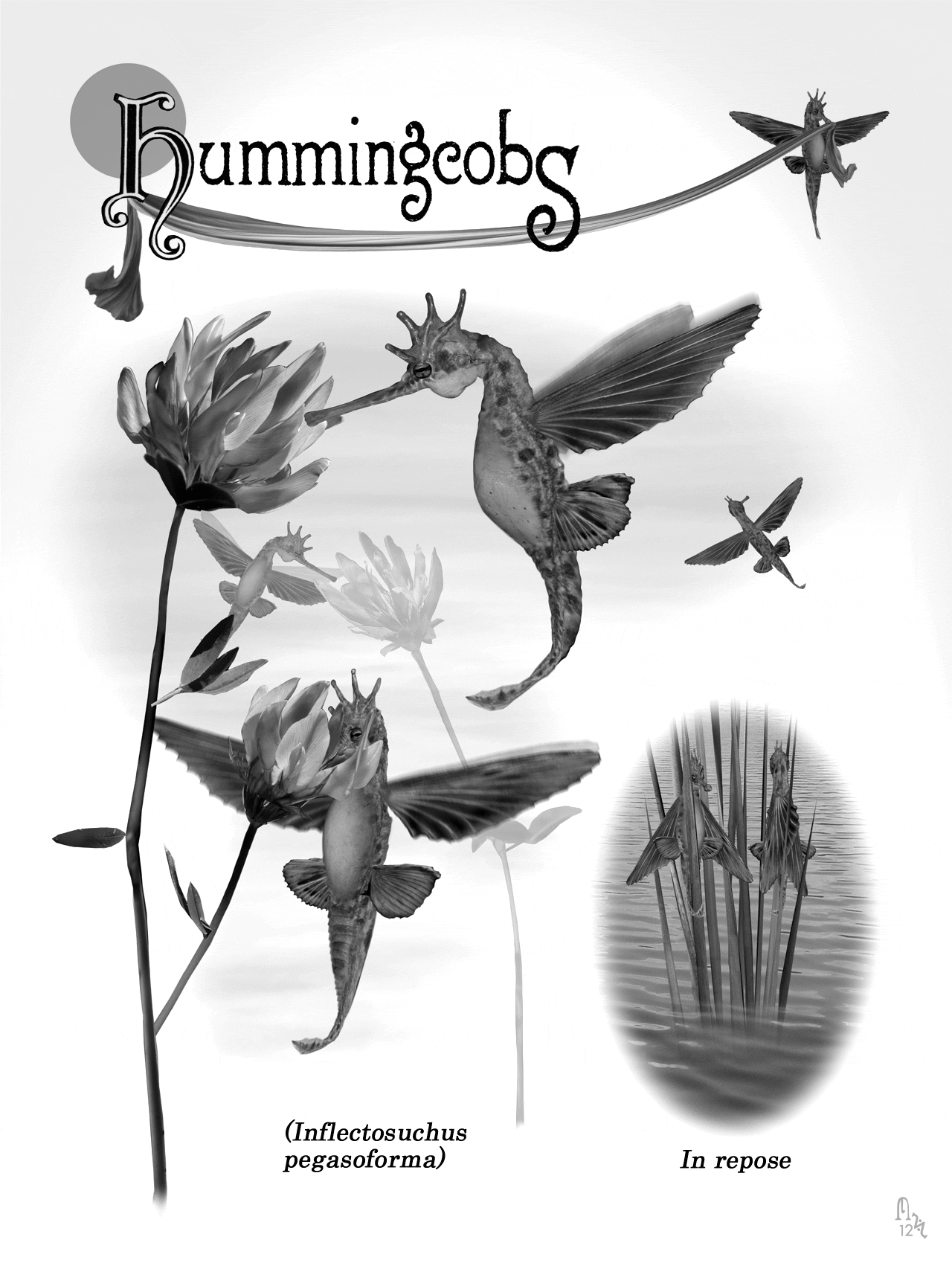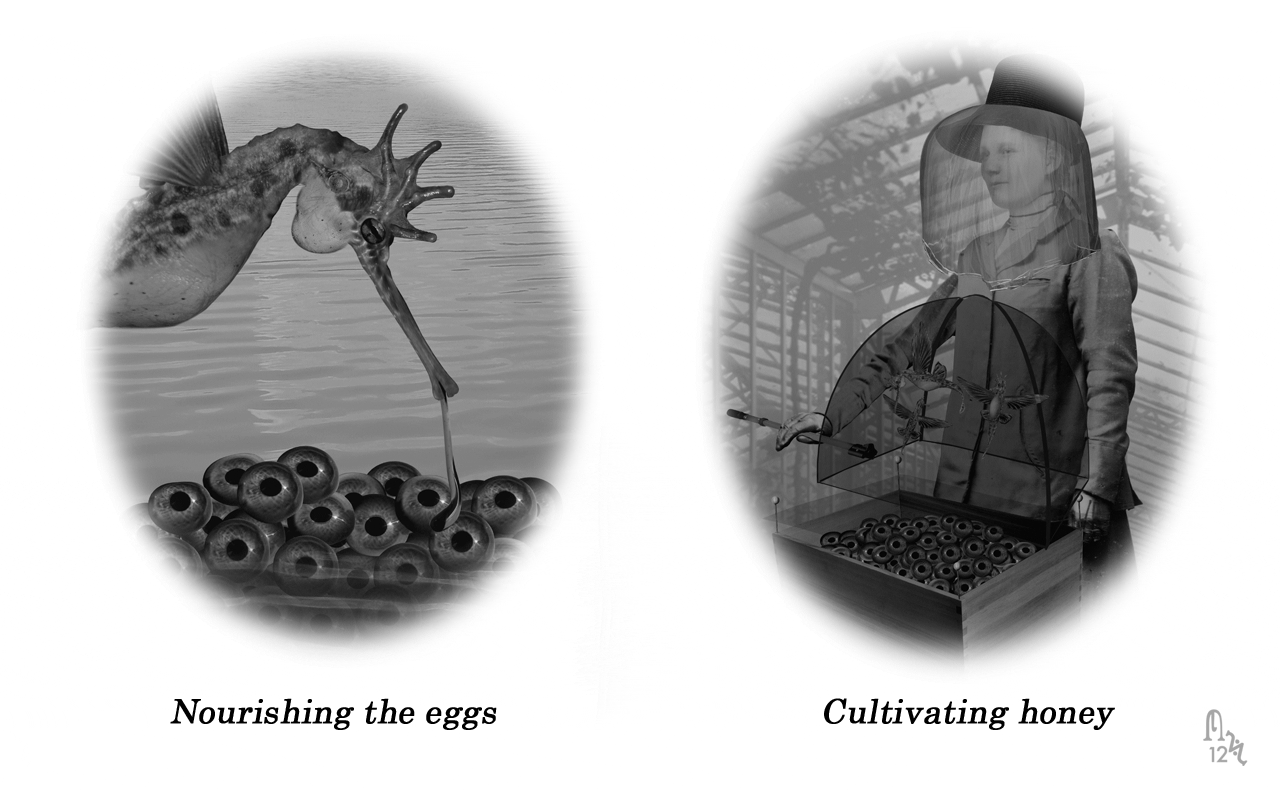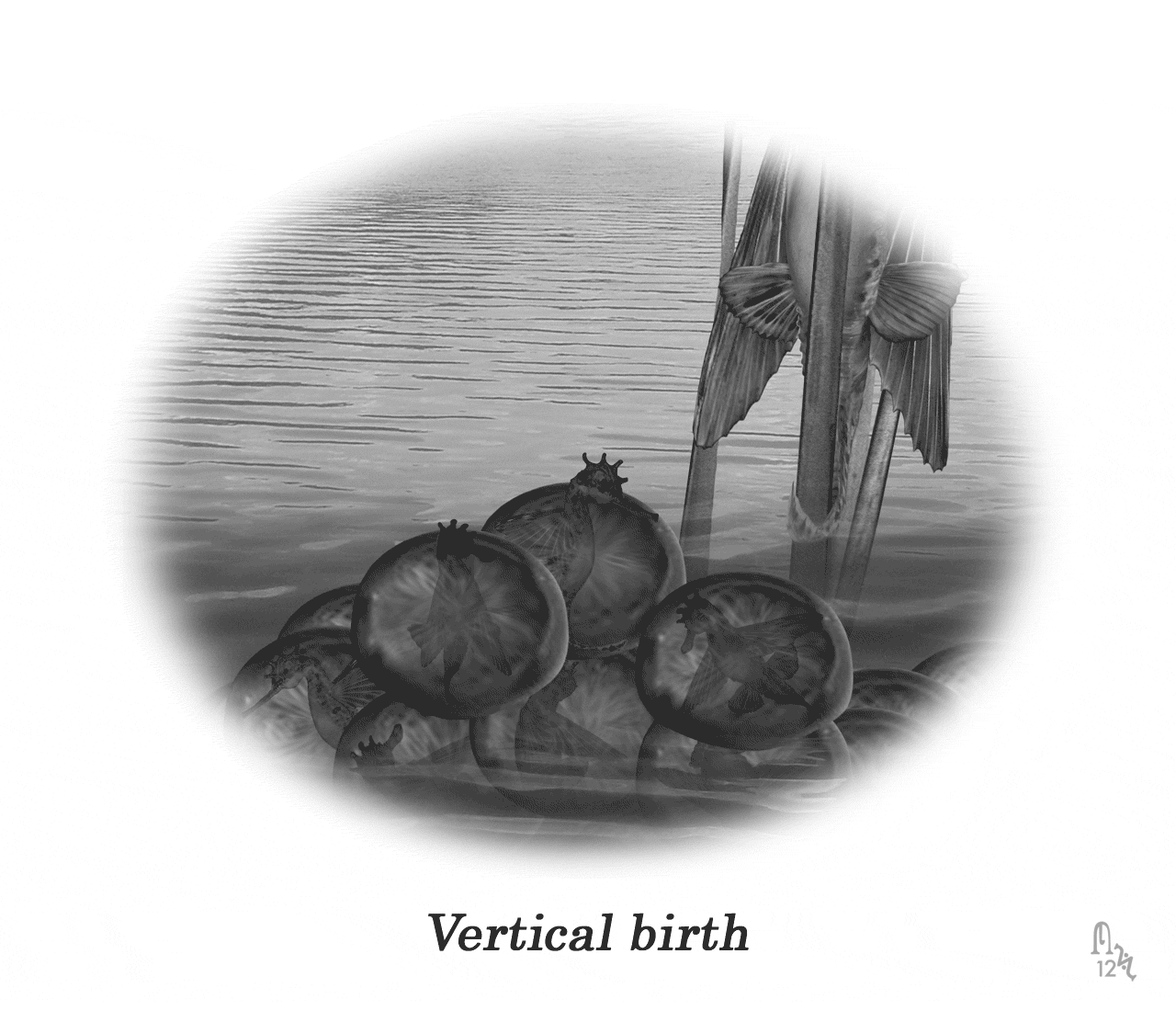Hummingcobs
The Hummingcob enjoys double recognition as the only amphibian species capable of genuine flight and the single source of edible honey apart from the bee. The condiment derives from an enzymatic process in the animal’s jowls when it regurgitates nectar on its egg deposits, providing essential nutrition for the unhatched fry.
Hummingcobs partake of a single flower, the Balkan clover (Trifolium moesium). They distribute pollen via their motile combs, which can grip the blossoms to stabilize their heads when feeding. Unlike the marine hippocampus that it superficially resembles, a hummingcob’s tail does not fully coil, but will wind around a reed stalk when the animal is at rest.
Subsisting only on nectar while bringing its eggs to term, a hummingcob will shed weight, granting it exceptional maneuverability in flight. During other cycles, it will also feed on tiny airborne mites for protein — honey production then is not possible.
Known only to flourish near the perennially damp hot spring craters of Varstulla Minor (site of ancient Roman baths), hummingcobs are also found in hothouses across Euxinova, where the famed Balkan Clover Strained honey is produced by licensed manufacturers and enthused hobbyists.
